Animalia
The elm leaf beetle
Xanthogaleruca luteola
Andreja Kavčič
|
|
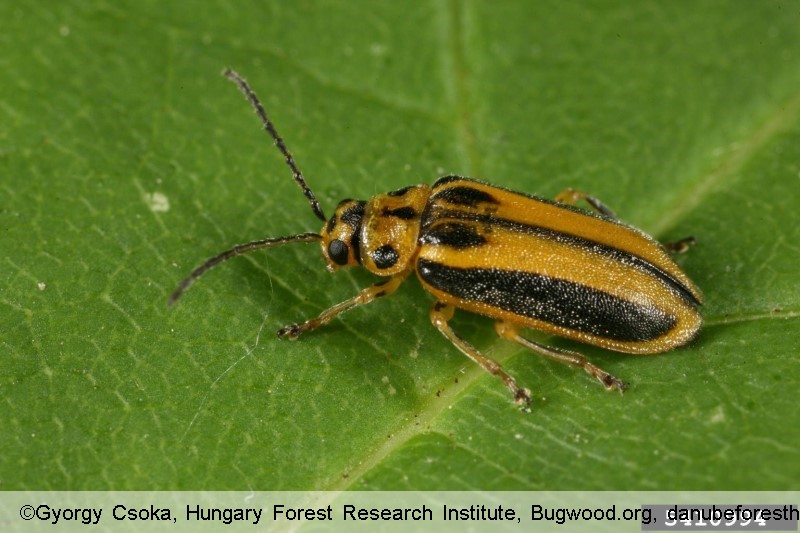
Fig. 1. An elm leaf beetle, Xanthogaleruca luteola, adult
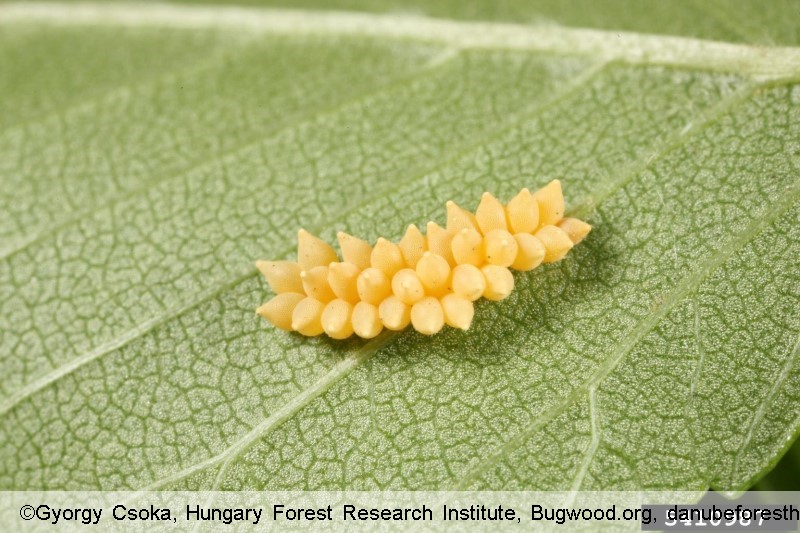
Fig. 2. The elm leaf beetle eggs
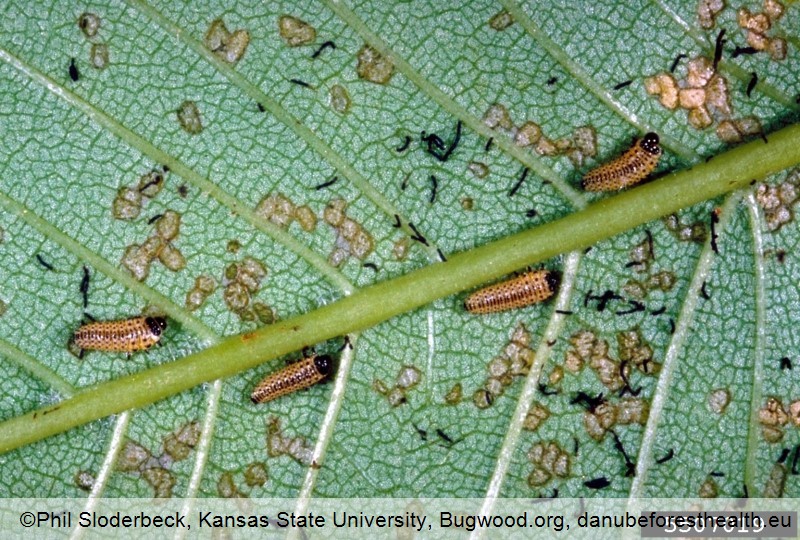
Fig. 3. The elm leaf beetle larvae
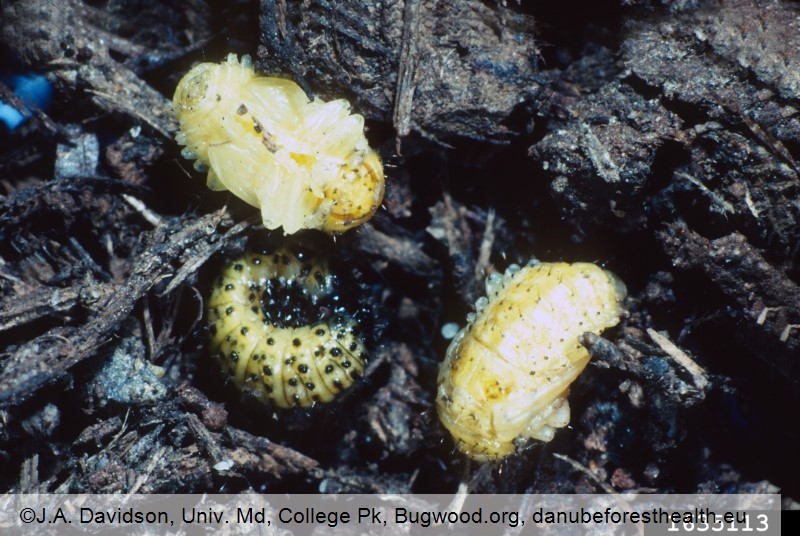
Fig. 4. Xanthogaleruca luteola pupae in the duff
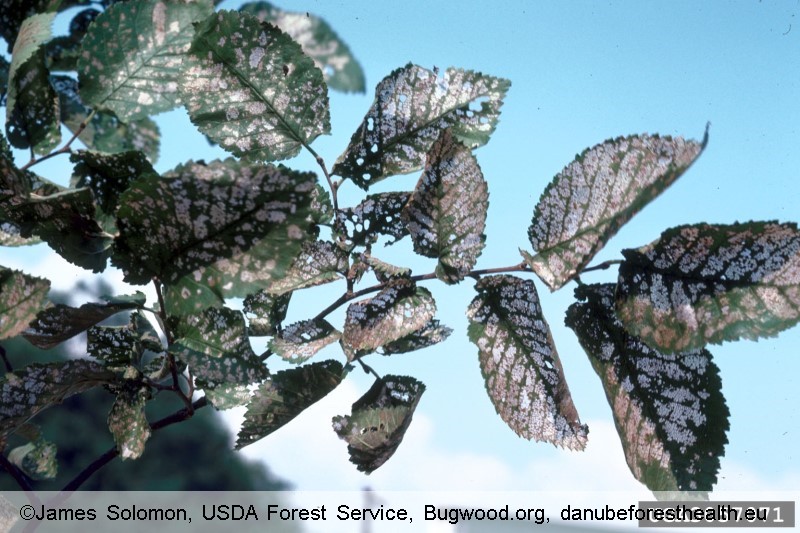
Fig. 5. Skeletonization on elm caused by Xanthogaleruca luteola larvae
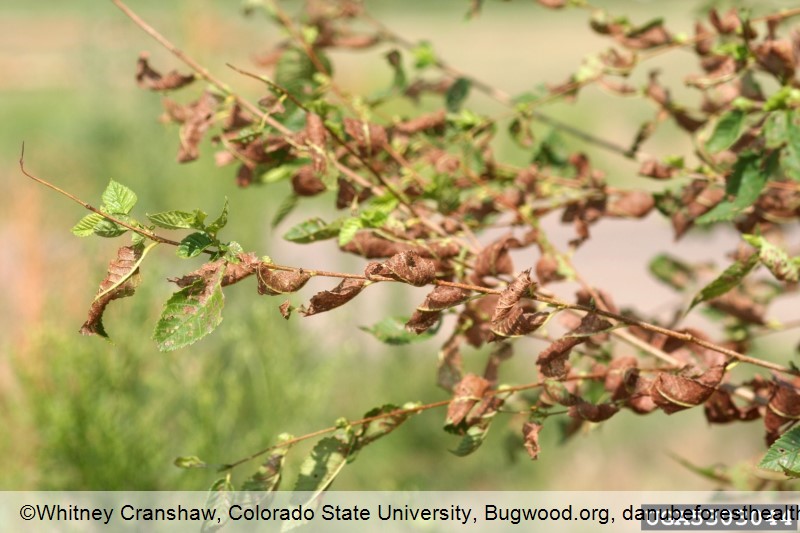
Fig. 6. Damage caused by the elm leaf beetle
DETECTION PERIOD:
April to October
DESCRIPTION:
Adults are 6–8 mm long beetles. The body is dark olive green, with a wide golden stripe along each elytron. The pronotum bears a black hourglass mark in the middle, with a black dot on each side. The beetle has 2 generations per year. Adults overwinter. In the early spring, females lay eggs on the underside of elm leaves. Each female lays up to 800 eggs in groups of 25. Eggs are yellow with a pointed tip. Larvae hatch after a week and immediately start feeding on the underside of leaves, thus causing skeletonization of elm leaves. Larvae are dark olive green, with a yellow stripe along each side of the body, and up to 13 mm long. Larve pupate on the underside of leaves or in bark crevices. The pupa is orange yellow. Adults of the first generation hatch in the mid-summer and produce the second generation of beetles. Adults of the second generation overwinter (in the ground, … often in houses).
HABITAT:
Natural habitats, nurseries, plantations and urban areas. Larvae feed on the underside of elm (Ulmus spp.) leaves.
STATUS:
The elm leaf beetle, Xanthogaleruca luteola, is native in Europe and is common throughout the Refocus area – it is more common in southern territories.
IMPACT:
Damage is caused by larvae and adults, which feed on elm leaves and cause skeletonization and defoliation. Damage is caused throughout the season. During a massive attack and the loss of a large amount of photosynthetic tissue, the tree gradually loses its vigour and defence ability. A weakened tree has stunted growth and is more susceptible to negative impacts of biotic and abiotic environmental factors. The elm leaf beetle is a serious pest of elm (Ulmus spp.).
SIMILAR SPECIES:
Xanthogaleruca luteola can be distinguished from other species by the characteristic morphology of all developmental stages.
|